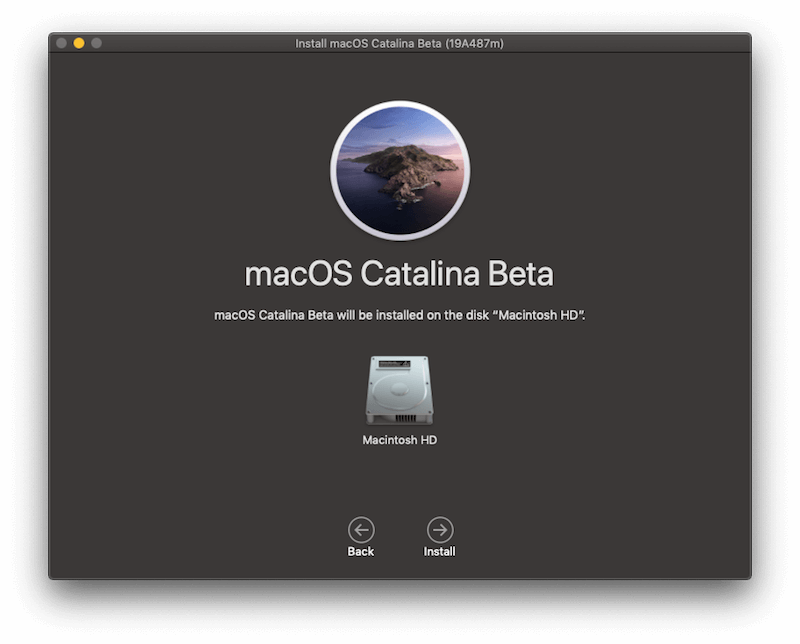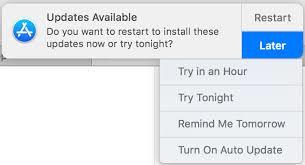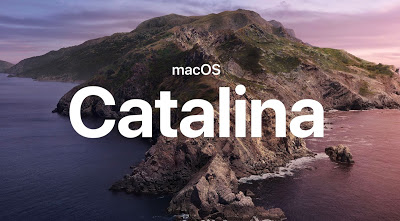- Download the latest Git for Mac installer. Follow the prompts to install Git. Open a terminal and verify the installation was successful by typing git -version: $ git -version. Git version 2.9.2. Configure your Git username and email using the following commands, replacing Emma's name with your own.
- Today, I attempted installing GitHub Desktop on my mac and I got a following message: 'GitHub Desktop' can't be opened because Apple cannot check it for malicious software. This software needs t.
- Install Git On Mac Catalina Os
- How Do I Install Git On Mac
- Install Git On Mac Catalina Download
- Install Git Osx Catalina
- How To Install Git On Mac Catalina
Having recently started afresh on macOS, I thought I’d make some notes on setting up a new dev environment. In this post we’ll set up a fresh dev environment for Ruby and Elixir – but you can use this guide for any similar web development set-up since the version manager we’ll be using can be used for lots and lots and lots of different languages.
The safest place to get apps for your Mac is the App Store. Apple reviews each app in the App Store before it’s accepted and signs it to ensure that it hasn’t been tampered with or altered. If there’s ever a problem with an app, Apple can remove it from the store quickly.
If you download and install apps from the Internet or directly from a developer, macOS continues to protect your Mac. When you install Mac apps, plug-ins and installer packages from outside the App Store, macOS checks the Developer ID signature to verify that the software is from an identified developer and that it has not been altered. By default, macOS Catalina and later also requires software to be notarised, so you can be confident that the software you run on your Mac doesn't contain known malware. Before opening downloaded software for the first time, macOS requests your approval to make sure you aren’t misled into running software you didn’t expect.
Running software that hasn’t been signed and notarised may expose your computer and personal information to malware that can harm your Mac or compromise your privacy.
The warning messages displayed below are examples, and it's possible that you could see a similar message that isn't displayed here. Please take caution if you choose to install any software for which your Mac displays an alert.
View the app security settings on your Mac
By default, the security and privacy preferences of your Mac are set to allow apps from the App Store and identified developers. For additional security, you can choose to only allow apps from the App Store.
In System Preferences, click Security & Privacy and then click General. Click the lock and enter your password to make changes. Select App Store under the header “Allow apps downloaded from”.

Open a developer-signed or notarised app
If your Mac is set to allow apps from the App Store and identified developers, the first time that you launch a new app, your Mac will ask if you’re sure you want to open it.
An app that has been notarised by Apple indicates that Apple checked it for malicious software and none was detected.
If you see a warning message and can’t install an app
If you have set your Mac to only allow apps from the App Store and you try to install an app from elsewhere, your Mac will say that the app can't be opened because it was not downloaded from the App Store.*
If your Mac is set to allow apps from the App Store and identified developers, and you try to install an app that isn’t signed by an identified developer and – in macOS Catalina and later – notarised by Apple, you also see a warning that the app cannot be opened.
If you see this warning, it means that the app was not notarised, and Apple could not scan the app for known malicious software.

You may want to look for an updated version of the app in the App Store or look for an alternative app.
If macOS detects a malicious app
If macOS detects that software has malicious content or its authorisation has been revoked for any reason, your Mac will notify you that the app will damage your computer. You should move this app to the Trash and check 'Report malware to Apple to protect other users'.
If you want to open an app that hasn’t been notarised or is from an unidentified developer
Running software that hasn’t been signed and notarised may expose your computer and personal information to malware that can harm your Mac or compromise your privacy. If you’re certain that an app you want to install is from a trustworthy source and hasn’t been tampered with, you can override your Mac security settings temporarily to open it.
If you still want to open an app for which the developer cannot be verified, open System Preferences.*
Go to Security & Privacy. Click the Open Anyway button in the General pane to confirm your intent to open or install the app.
The warning prompt reappears, and if you're absolutely sure that you want to open the app anyway, you can click Open.
The app will now be saved as an exception to your security settings, and you can open it in the future by double-clicking it, just as you can any authorised app.
Privacy protections
macOS has been designed to keep users and their data safe while respecting their privacy.
Gatekeeper performs online checks to verify whether an app contains known malware and whether the developer’s signing certificate is revoked. We have never combined data from these checks with information about Apple users or their devices. We do not use data from these checks to learn what individual users are launching or running on their devices.
Install Git On Mac Catalina Os
Notarisation checks whether the app contains known malware using an encrypted connection that is resilient to server failures.
These security checks have never included the user’s Apple ID or the identity of their device. To further protect privacy, we have stopped logging IP addresses associated with Developer ID certificate checks, and we will ensure that any collected IP addresses are removed from logs.
In addition, over the next year, we will introduce several changes to our security checks:
- A new encrypted protocol for Developer ID certificate revocation checks
- Strong protections against server failure
- A new preference for users to opt out of these security protections
* If you're prompted to open the app in Finder and you're sure that you want to open it despite the warning, you can control-click the app, choose Open from the menu, and then click Open in the dialogue that appears. Enter your admin name and password to open the app.
Categories: r Tags: lightgbmboostedtreemethodshowto100DaysToOffload
In this walkthrough Iinstall lightgbm on the latest version of R on an older model macBook Pro withMacos Catalina 10.15.5 and I’m using homebrew.
The world of boosted tree models is growing over the past 4 years, the firstrevolution was with ‘XGBoost’ (eXtreme Gradient Boosting) in 2016, followed by‘lightGBM’ (or LGBM) from January 2017 and later that year ‘catboost’. To usethese C++ libraries in R you have to install them, and that process is slightlydifferent for different architectures.
Prep
I’m also using the amazing RSwitch tool for the Macto switch R versions: from 4.1.0 “experimental version”, to the latest stable versionR 4.0.2 ‘Taking off again’ and an older version beforethat R 3.6.3 (2020-02-29) ‘Holding the Windsock’.I’m trying to install this library on all R versions, but if you use one versionof R, this RSwitch tool is not necessary.
I’m mentioning all this because sometimes these things are really difficult todebug under different operating systems, and different R versions.For work I installed lightGBM on a macbook a year ago, and it was a lot more work then.
Installation
I’m following the instructions at lightgbm.readthedocs.ioand you should too.
How Do I Install Git On Mac
First I download the code to my computer:
I deleted the lightGBM folder and re ran the git clone command.
Install Git On Mac Catalina Download
Continuing the installation: going into the lightGBM folderand executing the build_r.R script.
And a failure, I do not have openMP (a multithreading library) installed brew install libomp.I did have it installed, it seems, but it wasn’t linked brew link --overwrite libomp.This was a bit aggressive, it overwrites all links to libomp. I may have brokenthings later, but the installation continues and is successful.
(Re)start your R session and check if you can load the library library(lightgbm).
Installing on multiple R versions using RSwitch
Install Git Osx Catalina
I than used RSwitch to switch R version to an older version of R andreran the Rscript build_r.R command in the same folder.The process reruns the installation and because RSwitch switches the R versionthe package is now installed in the older R version location:the script spews out* installing to library ‘/Library/Frameworks/R.framework/Versions/4.0/Resources/library’
(Re)start your R session and check if you can load the library library(lightgbm).once finished and verifiedI switch to R3.6 and rerun the script again.It now installs in* installing to library ‘/Library/Frameworks/R.framework/Versions/3.6/Resources/library’
And you are done.
How to install lightgbm with renv
renv builds a separate libraryfor your project. This is cool, because it allows you to use different packagesthat do not influence each other. However starting a new project with renvdoes not have lightgbm installed.
How To Install Git On Mac Catalina
I’ve found the easiest is to use setwd() in your R console to move to theLightGBM folder and then ssource('build_r.R') this will build the packageagain and place it in the correct library.
I thought there would be issues with different versions of R, but the main issuesare related to architecture: system libraries that you have to install on macos.After this installation the installation of the R wrapper is not really a bigissue anymore, at least not for R 3.6, 4.0 and 4.1 (at the time of writing).
References


- Find more polished R tutorials by me in this tutorial overview page on my main blog feed
- find other posts about these gradient boosted tree methods on this website under the tag boostedtreemethods
I’m publishing this post too as part of 100 Days To Offload. You can join in yourself by visiting https://100daystooffload.com, post - 16/100
Find other posts tagged #100DaysToOffload here